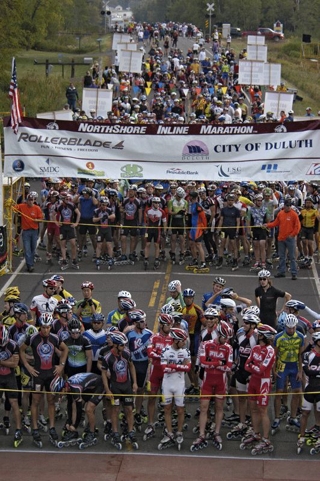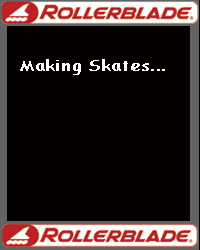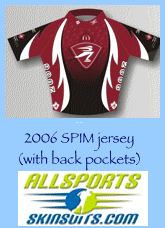Marathon Training and Racing for the Advanced Competitor: Part 4 Start Fast To Finish Quick
And learn to rest along the way
By Barry Publow
(posted Friday, May 5, 2006) 
Skaters line up for the start of the 2005 Northshore Inline Marathon.
Photo: Darlene Prois
Marathons aren't necessarily won by the rabbits (the racers who shoot out of the starting line first). But if you want a good finish, it's important to get off the line quickly and find yourself a hard-working paceline as soon as possible. To illustrate my point, let's consider the example of two skaters of equal ability: Skater A lines up near the starting line before the start and skates aggressively as soon as the gun goes off. Skater B, on the other hand, starts a few rows back and is more cautious in the early goings. Within the first mile, two pacelines form. Only 10 seconds separate them, but the first pack (containing Skater A) is moving 2 percent faster than the second pack. By the time it reaches the finish line, it will be five minutes ahead of the slower pack (containing Skater B). And what was the cost of this better finish for Skater A? Not much. Due to the benefits of drafting, Skater A didn't expend any more energy than Skater B. So here's the moral of the story: Make sure you get into the right paceline at the beginning of the race. And how do you know if you’re in the right paceline? ... Find one that will challenge you. Here's a rule of thumb: If you are able to lead a paceline much of the time, it is too slow for you. Ideally, you want to find a paceline with skaters who are faster than you are, even though that makes leading a little scary. Workhorses and Wheel Suckers If you’ve skated a few marathons, you know that quite often a paceline contains both workhorses (those who push the pace at the front) and wheel suckers (those who struggle at the rear). If you regularly find yourself in the role of workhorse, get over it: You are not optimizing your time or placement. Instead, skate harder at the start of the race and get yourself into a paceline that is faster than you are. Learn How to Rest Here's my final tip for improving your performance in marathons: Learn to grab rest on the fly. What this means is taking as few strides as possible from start to finish. Many skaters continue to stride even when they don't need to. Instead, put your hands on your knees and rest and glide whenever the opportunity arises, such as when the pace momentarily slackens or you are descending a hill. Always remember to be efficient. Think of rest as a way to "bank" your strength. Each time you save a few strides, you are banking the energy you would have used. The energy you save with each stride may seem miniscule but it adds up. By the end of the race, you can take a "withdrawal" and spend it to your final sprint! Barry Publow is a Canadian speed coach and author of Speed on Skates. He offers weekend speed and technique workshops throughout Canada, the United States and in Europe. Barry offers custom tailored web-based coaching and programming for roller speed skaters of all abilities, as well as a 6-month summer marathon preparation program. Visit his web site for details. Go to: Part 1: Marathon Training for Advanced Skaters Part 2: Want to race fast? ... train fast! Part 3: Interval training for marathon skaters Part 4: The Important of Starts and Resting While You Race Related reading:
• Advanced Skills for Inline Skaters. • Beginner's guide to outdoor racing. | 








